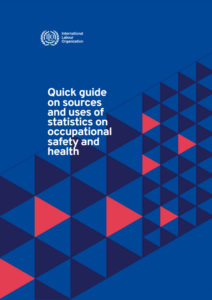Related pages
Administrative data sources can provide labour statistics on various topics, sometimes with a high degree of accuracy, reliability, and cost-effectiveness. They are created and maintained by public or private entities for their own administrative purposes (and not statistical ones) but they still have great statistical potential. Administrative data sources cannot replace labour force surveys given their targeted design to measure labour market issues of interest, but the complementary or combined use of administrative and survey data can be highly beneficial for labour statistics.
The increasing use of electronic methods for data entry and storage enhances the availability, timeliness, granularity, and user-friendliness of administrative records, including of those relevant for labour statistics such as population registers, business registers, social insurance records, employment office records, taxation records, records of workers’ organizations, collective bargaining agreements, and labour inspection records.
In general, administrative records are a rather inexpensive source of labour statistics, crucial for topics not easily covered by traditional statistical sources, like occupational safety and health, industrial relations, and social protection coverage. However, administrative data sources present several limitations, not least the fact that their contents, methodology, coverage, data accuracy, completeness, and timeliness are all determined by administrative processes and needs.
In the absence of a regular or recent survey, administrative records can provide basic labour market indicators to monitor trends and patterns. Where a regular labour force survey does exist, administrative data can improve survey data quality, range, and cost-efficiency. The document presented to the 21st International Conference of Labour Statisticians Making full use of administrative data – A case for administrative registers as a complementary source of labour statistics summarizes the main potential uses of administrative data in the field of labour statistics, citing relevant country practices across regions.
Publications
Find below guides and manuals related to the production of labour statistics from administrative data sources, including for specific topics of labour statistics.
Note: Many publications are available only in English. If available in other languages, a new page will open displaying the options on the right.

Promoting the use of administrative data sources for international labour migration statistics in Türkiye
This case study highlights Türkiye’s use of national frameworks for leveraging administrative data to generate labour statistics on international migrants. It also contributes to revising the 2018 ICLS Guidelines.

Questionnaire for Self-Assessment of the Quality of Administrative Records (SAQUAR)
This questionnaire, which is an adaptation of the Questionnaire for Evaluating the Quality of Administrative Records (CECRA, for its initials in Spanish) recommended by the Working Group on Administrative Records in the framework of the Statistical Conference of the Americas and coordinated by ECLAC, is a tool to assess the quality of administrative records for their potential use for labour statistics purposes.

User Guide for the Questionnaire for Self-Assessment of the Quality of Administrative Records (SAQUAR)
This user guide provides tips and clarifications for the completion of the Self-Assessment of the Quality of Administrative Records (SAQUAR) form, an adaptation of the Questionnaire for Evaluating the Quality of Administrative Records (CECRA, for its initials in Spanish) recommended by the Working Group on Administrative Records in the framework of the Statistical Conference of the Americas and coordinated by ECLAC.

Quick Guide on sources and uses of statistics on occupational safety and health
This guide gives an overview of the main aspects of occupational safety and health statistics, including their relevance and uses.

Quick guide on sources and uses of collective bargaining statistics
Collective bargaining statistics are crucial to assess labour markets but also the state of industrial relations. However, the particularities linked with the data sources and data quality make collective bargaining statistics a very challenging field of labour statistics. Get information about all the main aspects of collective bargaining statistics in this quick guide.

Quick guide on sources and uses of labour statistics
This guide walks readers through the basics of labour statistics, from their conception to their final use. It includes key information on sources, standards, concepts, definitions, scope and interpretation of labour statistics, making it a valuable tool for anyone wanting to learn the essentials of labour statistics.

Guide on the Harmonization of Labour Inspection Statistics
This publication provides a methodology for the use of common terms and definitions and common procedures for the collection and compilation of labour inspection data. It also incorporates several additional recommendations that further the objective of harmonizing labour inspection statistics.

Sources and Methods Volume 4: Administrative records and related sources (2004) – Employment, unemployment, wages and hours of work
This volume presents national methodological descriptions of statistics of employment, unemployment, wages and hours of work, derived from administrative records and related sources. It is a revised and updated version of the first edition issued in 1989, and contains 124 descriptions in respect of 102 countries, areas and territories.
